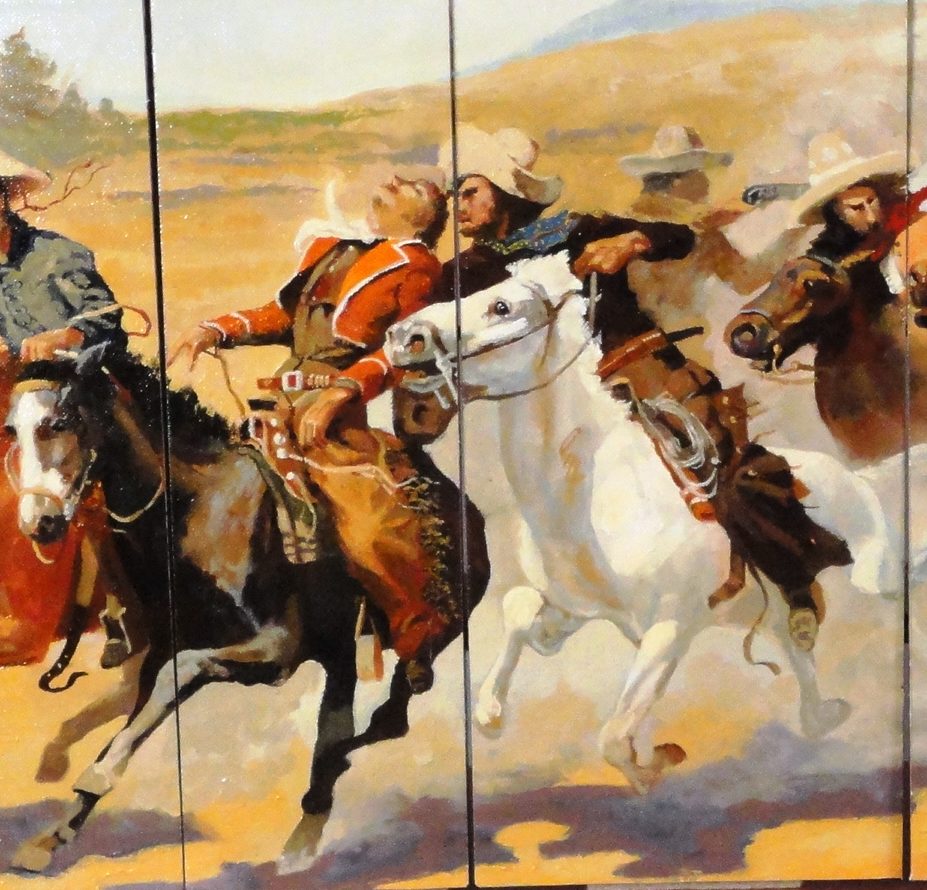July 22 — October 1, 2017 | Art League Gallery
Reception: September 1, 2017 | 5:00 – 9:00 p.m.
Gallery talk about his work beginning at 7:00 p.m.
Drawing upon his extensive knowledge of American Art History, as well as his long tenure as a museum professional (19 years at the Smithsonian), Volkert
I have drawn, painted, tinkered and built things all my life. I’m interested in structures, tangible or intellectual, and find satisfaction in understanding the components that create them. My interest in structures extends from the original usefulness or significance of an object, an idea or a place or moment in time, to exploring ways to replicate its elegance or potency in an original work of art. The objects, ideas and moments in this exhibit were explored in relation to works by American artists, primarily from the mid-18th to the mid-19th Centuries because of their inherent narrative qualities.

Racer’s Rhythm: After Sloan,
Oil on canvas, brass, vintage pigeon bands,
24″ x 24″, 2014.
I’ll collect an object now and then, but the ones in this exhibit were given to me by friends or discovered by accident. Pigeon leg bands forwarded from a friend became the impetus to focus on the flight of John Sloan’s Pigeons (1910) in Racer’s Rhythm: After Sloan. Their placement over the birds unintentionally created a musical staff of notes suggesting the sound of their ascending flutter. The design of a huge nineteenth-century rock crusher stumbled upon in Nevada City, California, suggested repetitive sound and motion that inspired the pairing of a similar mechanism with a iconic western image in Gallop: After Remington. The idea of close examination of Thomas Eakins’ The Gross Clinic (1875) led me to order lenses and invent moveable mounts allowing visitors to select parts of the painting for closer viewing of what was once scandalous subject matter in Examination: After Eakins.

Point Perspective: After Moran,
Oil on canvas, wood, sandstone, brass,
25″ x 16″ x 10″, 2015.
Excellent craftsmanship is central to my aesthetic and especially satisfying when objects, ideas, or places or moments in time come together in an experiential solution. Point Perspective: After Moran began with having the opportunity to stand on the South Rim of the Grand Canyon in 2016 at what is now identified as Moran Point, the view captured by Thomas Moran in his 1871 painting Grand Canyon that helped establish the National Park System. I picked up a representative rock to mark the moment. After studying Moran’s technique, I recreated the painting and selected a portion of the original for framing behind a carriage device that allows the viewer to slide the stone between 111.924350 W and 111.924276 W (GPS coordinates of a 36’ stretch of that location) as if personally walking the rim, as did Moran, to pick a favorite view.
It isn’t necessary for viewers to know the backstory of the original paintings, the acquired objects or the ideas that inspire me art historical constructions: I trust them to find components that they recognize, relate to, or find new or interesting. However, like touring the back-of-house in a theater, museum or factory, I enjoy knowing the reasons why or the steps of how something is produced or made, and I hope this exhibit provides an opportunity for viewers to connect to the joy I take in my process of researching, replicating, building, and creating works of art.
—James Volkert, 2017
James W. Volkert earned his BA in Art from University of California at Davis, and his MFA in Painting from the Art Center College of Design in Pasadena. After a stint with the 1970s Los Angeles art scene, and in support of his growing family, he transferred his skills to museum work. That decision propelled him professionally through his retirement from the Smithsonian Institution in 2005, and forms the basis of his consulting business, Exhibition Associates.
His art and design sensibilities served him well from his position of Director of Exhibitions at the legendary Junior Arts Center in Barnsdall Art Park in Hollywood, California, to the Smithsonian where he created groundbreaking contemporary shows as Director of Exhibitions at the Smithsonian American Art Museum (SAAM) in Washington, D.C. before serving in the same capacity at the National Museum of the American Indian(NMAI) in Washington, DC. As Associate Director of NMAI, he collaborated in the vision for and creation of the Cultural Resources Center in Suitland, MD: the nation’s first facility designed to reconnect Native Americans with tribal objects significant to their history and cultural practice. Volkert also supervised the NMAI’s revolutionary museum building construction project, conceived the inaugural exhibitions for the museum’s opening, and led the Transition Team in charge of the completion of the museum on the National Mall in September 2004.
When asked about highlights from a long career in art, design, and museums, Volkert agrees that he has enjoyed fantastic varied experiences, from serving as secretary in the UC Davis Art Department (“I always knew where the parties were.”), to creating a children’s sculpture workshop with Christo (“We used ice to meet his contract requirements that no residual products would remain.”) , to escorting Man Ray’s widow down a Paris avenue while researching the artist for an exhibition (“She had me carry her purse.”), to opening NMAI in DC (“Seeing over 30,000 Native People process in full regalia at the dedication on the Mall confirmed the museum as a locus for Native communities.”), and to working with the Jordan Museum in Amman, Jordan (“They have the earliest example of one of the few objects that hasn’t changed design in 6,000 years.”). James Volkert lives in Conway, Arkansas, with his wife Barbara Satterfield. Together, they have four children and five grandchildren spread from the east to west coasts and in between.


